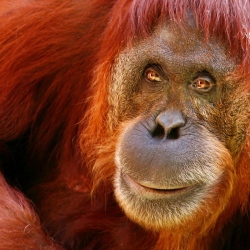
Scientists have successfully treated the deadly Ebola virus in infected animals following onset of disease symptoms, according to a report published online today in Science Translational Medicine. The results show promise for developing therapies against the virus, which causes hemorrhagic fever with human case fatality rates as high as 90 percent.
According to first author James Pettitt of the U.S. Army Medical Research Institute of Infectious Diseases (USAMRIID), the research team previously demonstrated that the treatment-known as MB-003-protected 100 percent of non-human primates when given one hour after Ebola exposure. Two-thirds of the animals were protected when treated 48 hours after exposure.
In the current study, 43 percent of infected non-human primates recovered after receiving the treatment intravenously 104 to 120 hours after infection. The experimental design differed significantly from the team’s earlier work-this time, infected animals were not treated until they developed measurable symptoms of disease.
Ebola virus has been responsible for numerous deaths in Africa over the past several years. In addition to being a global health concern, the virus also is considered a potential biological threat agent.
"By requiring both a documentable fever and a positive diagnostic assay result for Ebola infection before initiating treatment in these animals, we were able to use MB-003 as a true therapeutic countermeasure," said senior author Gene Olinger, Ph.D., of USAMRIID. "These initial results push the threshold of MB-003 from post-exposure prophylaxis to treating verified illness."
